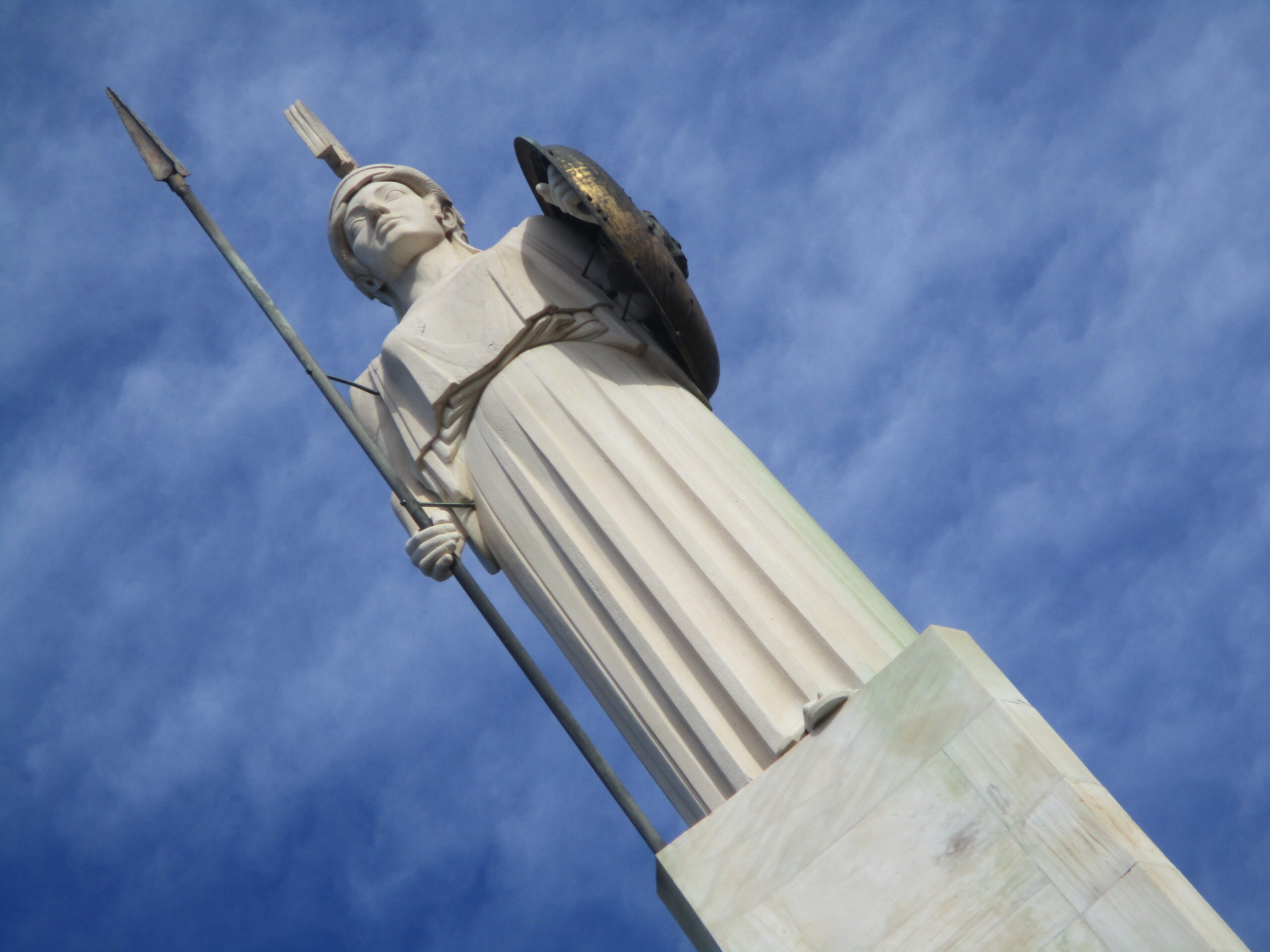A fan’s guide – the club from early doors to today
Until 2018, Olympiacos were beyond anyone in the Greek game – and way beyond great rivals Panathinaikos. The club from the port of Piraeus had just won seven titles in a row, to make a record haul of 44 in total.
But the cracks were beginning to show. Besieged by scandal and also occupied with his new role as majority shareholder in Nottingham Forest, club owner and shipping magnate Evangelos Marinakis began sacking managers for fun, six (!) times during the 2017-18 campaign alone.
Not only did Olympiacos fail to defend their league crown, they didn’t even finish second, trailing a revived AEK by 13 points to limp into third and Europa League qualification. In 2019, it was PAOK of Salonika who lifted the title.
A year later, normal service was restored with the first of three consecutive titles, followed by a run in the Conference League, beating Aston Villa in the semi and looking forward to a first Euro final for a Greek side since Panathinaikos in 1971 – with Athens the location.

Olympiacos are nicknamed ‘Thrylos’ or Legend, after the classic side of the 1930s that featured a forward line of the five Adrianopoulos brothers. In 2004, the last surviving member, 94-year-old Leonidas, lit the flame for the Olympic torch relay at Piraeus.
Initially businessmen, the brothers moved into local and national politics, their influence helping promote the club and organise its funding. Thrylos dominated the Greek game again in the 1950s (six straight title wins), the early 1980s (four straight title wins) and, quite incredibly, the 12 titles between 2005 and 2017. Only three titles between 1997 and 2017 did not end up in Piraeus.
Until December 2010, the man behind all this success was mobile-phone millionaire Sokratis Kokkalis. The money at his disposal has brought the likes of Rivaldo, Zlatko Zahovič and Giovanni to Piraeus – though coaches have come and gone in rapid succession. Scandal, surrounding both Kokkalis and, later, Marinakis, has dogged the club in equal measure as success.

On the positive side, their fortunes funded the complete rebuilding of the Karaiskakis stadium, the kind of contemporary, all-purpose venue Panathinaikos can only dream of.
In Europe, the 3-2 aggregate defeat to Manchester United came in the last 16 of the Champions League in 2014 – a tie that could easily have gone their way. Brought down to earth by a shock defeat at the hands of Hapoel Be’er Sheva, the Israelis barring the way to the Champions League group stage, the Piraeus club made it through in 2017-18 only to come up against Juventus and Barcelona.
It required the considerable managerial talents of Portuguese coach Pedro Martins to turn the ship around, winning three titles on the bounce from 2020 and reaching the group stages of the Champions and Europa Leagues until his luck ran out early in the 2022-23 campaign. Remarkably, this made him the longest-serving Olympiacos manager over a single stint in the club’s history, a reflection of the club’s capricious magnate owners.
This temporary nature of a head coaching role at Olympiacos was never better illustrated than during the following 18 months, which saw six mainly Iberian managers in the hot seat. Little was expected of the club’s European campaign in 2023-24, Diego Martínez in charge for the group stage – including a win at home to West Ham – and José Luis Mendilibar for the knock-out rounds.

In the quarter-final, Olympiacos held their nerve in a 3-2 thriller at home to Fenerbahçe, though few thrills are needed in any clash between Greeks and Turks. The return in Istanbul was equally edgy, Fenerbahçe taking an early lead before the Piraeus side hung on for the next 110 minutes to take the tie to penalties.
Despite having kept clean sheets in previous vital games, Greece U-21 international Konstantinos Tzolakis still wasn’t the club’s first-choice keeper when he faced dead-ball specialist Dušan Tadić in the shoot-out. Despite an atmosphere mildly described as fiery, the young Cretan saved the Serb’s shot, then two more from his teammates as Olympiacos pulled off a heroic victory.
In the first leg of the semi-final at Villa Park, still with Tzolakis between the sticks, Moroccan international Ayoub El Kaabi was the hero in the 4-2 win over Aston Villa, his hat-trick bringing his European tally to 13 goals in 17 games all season. A brace in the heated home leg swept Thrylos to a first-ever European final, a Greek team appearing in a Euro showdown for the first time since Panathinaikos in 1971.
That same year, the Karaiskakis staged two European finals as Chelsea required a replay to beat Real Madrid and take the Cup Winners’ Cup. More than half a century later, Olympiacos could plan for their big international moment safe in the knowledge that the fixture was being played in Athens – albeit at AEK’s new stadium.


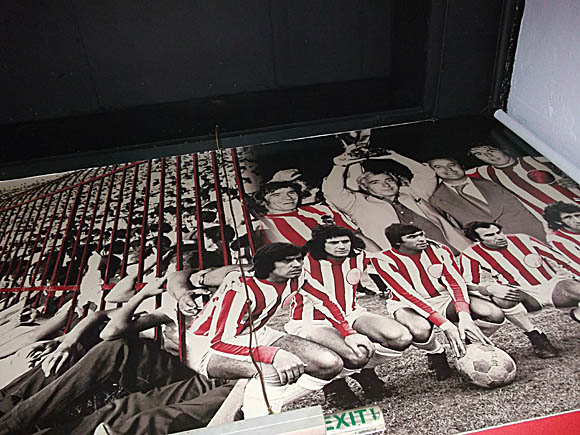

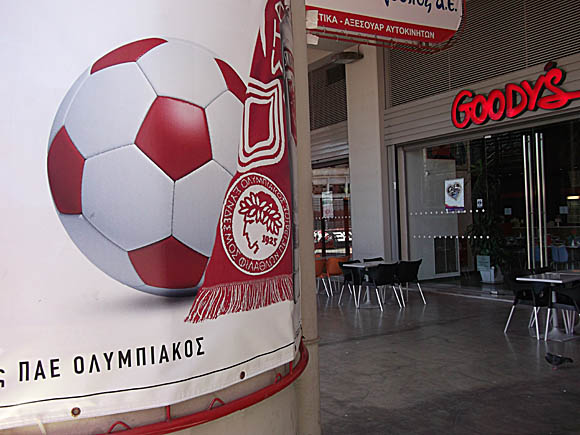


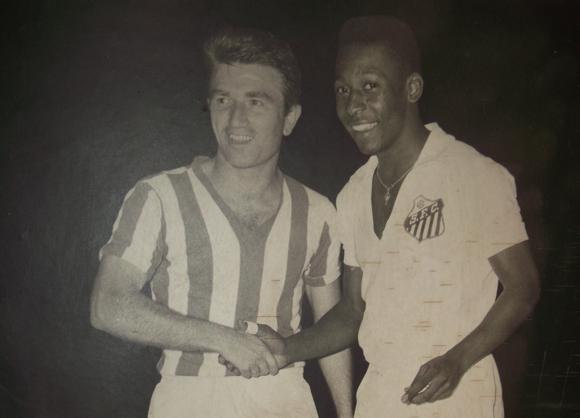



Stadium Guide
The field of dreams – and the story behind it


In both its former and current guise, the Karaiskakis has an atmosphere like no other, noise and fireworks exploding into the night over the port of Piraeus.
Built as a velodrome for the 1896 Olympics, converted for football in 1936, the Karaiskakis was first refurbished in the 1960s. The 32,000-capacity stadium was then completely rebuilt within weeks of the Games of 2004.
Before its 2004 renovation, it was known as the venue where Chelsea won the European Cup-Winners’ Cup in 1971 – and the one ten years later at which 21 fans died at gate 7 when Olympiacos were playing AEK. Signs and banners relating to Gate 7 are still erected at every match to honour those who lost their lives.



Today, now that AEK have their new stadium, the Karaiskakis welcomes the second-highest domestic attendances in Greece, around 20,000. Given the passionate support for the country’s most successful club of the modern era, this figure may be a little underwhelming, although European nights here can be magical occasions.
A club museum and store are complemented by a gym, a travel agents and, outside, automatic ticket machines.
The stadium has 34 gates that give access to sectors 118-127 behind and around the south goal as you approach from Neo Faliro metro station, 101-110 behind and around the north goal, including legendary gate 7. The West Stand (128-135) houses the press and VIPs, with the East Stand (110-117) facing it. Away fans are allocated sectors 123-126 in the south end.
getting here
Going to the stadium – tips and timings
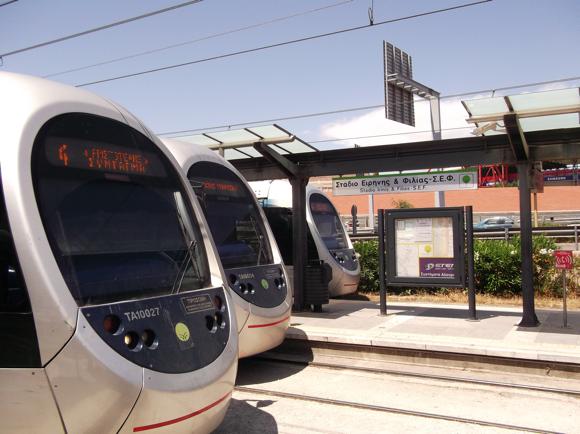

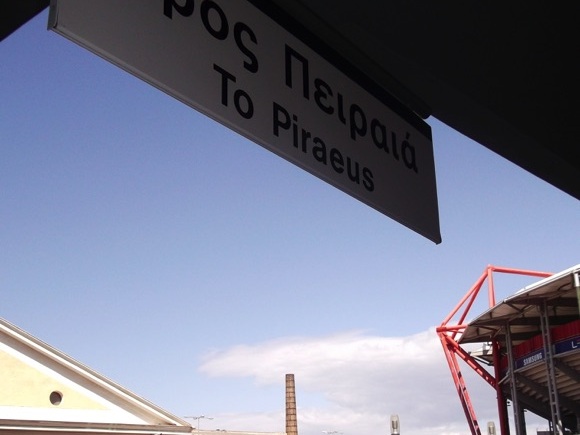
The Karaiskakis is right beside Neo Faliro metro station on green line 1. On the other side, across the wide stretch of main roads that link coast and city, is the terminus of the T3 and T4 tramlines, T4 with a direct link to Syntagma Square.
getting in
Buying tickets – when, where, how and how much
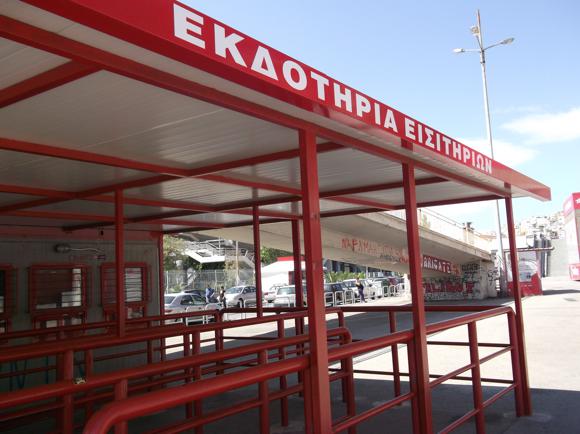

The club’s online ticket service has an English-friendly version, requiring registration. For all enquiries, contact +30 210 419 0902, extension 4 or email info@olympiacos.org.
Certain games may require a Fan Card (€10) from the CFP office at Gate 19. You will need to show ID and a Greek National Security Number, AMKA, although foreign ID should suffice.
An in-person ticket outlet operates in the days before the game from opposite Gate 25, open Mon-Fri 10am-6pm, occasionally Sat 10am-3pm. Again, you’ll have to show ID and an AMKA number to purchase, though a foreign passport should suffice.
For non-derby games, admission prices are reasonable: €10 for gates 3, 5-7 and 21-27, €15-€20 for gates 1-2, 8-10, 18-20, 28 & 35, €30-€40 for gates 11-12, 14-17, 30 and 33-34.
Prices rise considerably for derby matches and major European fixtures. Home supporters use gates 3-7 and 21-23, away fans gate 27 and, if required, 26.
what to buy
Shirts, kits, merchandise and gifts









The RED store (Mon, Wed & Sat 9am-5pm, Tue, Thur-Fri 9am-9pm, Sun 10am-3pm) by gate 9 is a large, spic-and-span boutique with shirt printing, a kids’ corner, retro Olympiacos shirts and, for the beach, branded batballs. The Olympiacos store on the other side of the stadium on Dimitriou is for the basketball team.
There are also tourist-friendly outlets in downtown Plaka (Mon-Fri 10am-9pm, Sat-Sun 10am-8pm) by the flea market, on the corner of Nisou and Ifestou, and on main Ermou (Mon-Fri 10am-9pm, Sat 10am-8pm, Sun 10am-6pm) close to Syntagma.
Along with classic Olympiacos tops of thin red-and-white stripes, the larger stadium outlet may stock T-shirts showing wonderfully unfashionable 1980s’ hero Nikos Anastopoulos celebrating yet another goal or attempting a scissors kick.
tours & Museum
Explore the club inside and out







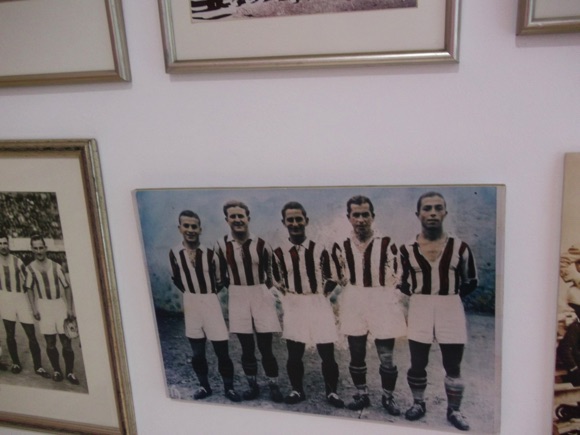




By gates 10/11, to the left of the RED store, the Olympiacos Museum (Tue-Fri 11am-5pm, Sat-Sun 11am-3pm) is well worth the modest €2 entrance fee even though all documentation is in Greek. Starting with the club’s original founding letter, an original ‘Imnos Olympiakos’ 78 and an old gramophone, this colourful collection runs through a century of club history.
There’s an area dedicated to the old Karaiskakis stadium and its fan culture, another dedicated to the stadium tragedy of 1981 and another, upstairs, to star players through the ages. Club anthems blast over the speakers as you walk round. Ground tours (Saturdays only) including a museum visit are €5.
Where to Drink
Pre-match beers for fans and casual visitors







At the stadium, the closure of the Olympiacos-themed red cafe means that there’s no obvious pre- and post-match watering hole – but this doesn’t mean to say that there’s nowhere for a beer before the game.
Starting with Neo Faliro station, Modello sits just the other side of the ticket barriers (Σ.Ε.Φ exit), before the footbridge over to the tram stop. More than just a pitstop for commuters, it offers a wide terrace, a large tap of Amstel and opening hours until 11pm daily.
Facing the stadium on Karaoli ke Dimitriou, the Bougatsa bakery doesn’t sell booze but you can tuck into a prime pastry on the terrace, where locals gather for coffee and gossip every morning. Open until 9pm daily.







Easily the best spot for drinks stands next door. Laughingly referred to by Google Maps as a ‘chophouse restaurant’, Sentra Kalamaki is a tiny bar and cheap eatery that takes its beer and football seriously. Glasses are kept nicely frozen for the consumption of cold Alfa while Olympiacos are celebrated in flag and photo form around the walls.
The handful of pavement tables catches the hot Piraeus sun, so you’ll be thinking about that next Alfa before you finish the first one.
Back at the stadium, the modest Sportcafé & Food occupies the space left by the red cafe beside the club store.
If you have VIP or press access, the Pure Red Café sits on the second floor via the lift. Here a panoramic terrace overlooking the pitch is complemented by a tasteful, glossy interior of house plants and understated Olympiacos iconography.


